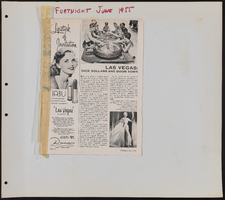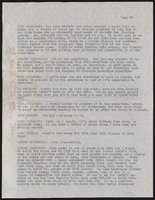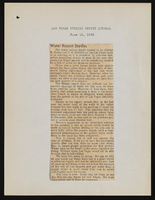Search the Special Collections and Archives Portal
Search Results
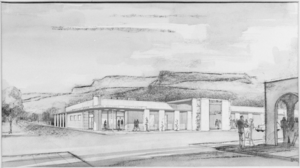
Film transparency of architectural drawing, Boulder City, Nevada, circa 1930s-1940s
Date
Archival Collection
Description
Image
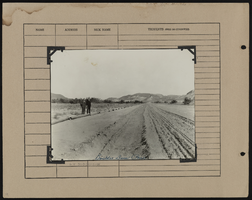
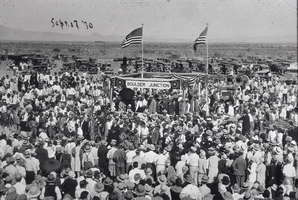
Slide of the Boulder Junction celebration, September 17, 1930
Date
Archival Collection
Description
Image
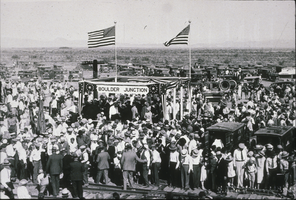
Slide of a crowd at the Boulder Junction near Las Vegas, September 1930
Date
Archival Collection
Description
Image

Patricia Lappin interview, February 26, 1980: transcript
Date
Archival Collection
Description
From the Ralph Roske Oral History Project on Early Las Vegas collection OH-01063. On February 26, 1980, Nancy Bright interviewed school teacher, Patricia Lappin (born April 14th, 1924 in Denver, Colorado) at Robert L. Taylor Elementary School in Henderson, Nevada. The interview covers Boulder City, Nevada around Hoover Dam. The two discuss the different gambling habits between Southern Nevada locals and Las Vegas tourists. During the latter half of the interview, the two speak at length about the impact of nuclear waste on Nevada. Lappin explains the unique issues that Southern Nevada faces as one of three states to accept nuclear waste.
Text
Audio recording clip of interview with Rev. Prentiss Walker by Bernard Timberg, January 27, 1974
Date
Archival Collection
Description
Part of an interview with Rev. Prentiss Walker conducted by Bernard Timberg on January 27, 1974. Walker describes discrimination during Hoover Dam construction and life in Las Vegas prior to segregation.
Sound
Ward Lindquist Photograph Collection on Lake Mead
Identifier
Abstract
The Ward Lindquist Photograph Collection on Lake Mead (approximately 1945-1956) contains black-and-white photographic prints and negatives primarily from Hoover Dam and Lake Mead, both located in both Arizona and Nevada. The images depict recreational activities at Lake Mead, namely fishing, swimming, boating, and camping. The remaining images depict the exterior and interior of Hoover Dam, as well as nature and wildlife in southern Nevada.
Archival Collection

